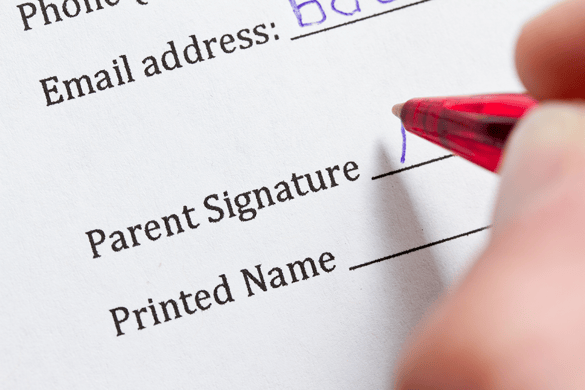6 money-saving strategies to reduce school spending

The cost of running a school has increased with the cost of living, and headteachers are looking for ways to save money across their schools. School business managers and Headteachers are facing the challenge of reducing school spending whilst still improving pupil outcomes, staff wellbeing and parental engagement. In this article, we share 6 tips on how schools can save money whilst maintaining high-quality provision.
What is the difference between saving money vs cost-cutting in schools?
There is a difference between saving money across your multi-academy trust (MAT) or school and cutting costs and budgets. Saving money involves making informed strategic decisions that still contribute to achieving whole-school long-term priorities (like increased parental engagement). Whereas cost cutting is short-term budget reductions which may not be beneficial for student and staff wellbeing and progression (like slashing the creative resource budget or minimising the number of teaching assistants).
6 ways school can save money
1. Smart staffing strategy
Up to 80% of the school’s overall budget is spent on staffing, making it the largest expenditure. In an ideal world, each year group and cohort would have an ample number of support staff supporting the academic and pastoral progression of all children. But we know budgets often aren’t that flexible; sometimes creative staffing uses are needed. Schools that are involved in a MAT can often be at an advantage to share specific staff across several schools (pastoral managers, educational psychologists, teaching assistants).
Some schools are thinking outside the box when utilising their current staff’s skill sets by investing in short-term training courses which allow individuals to take over the roles that previously would be externally contracted in. For example, a school may pay for the site manager or caretaker to undertake a PAT training course rather than paying the annual cost for PAT testing across the school.
Advertising non-teaching roles can be an expensive process; consider using social media platforms and your school's communication system to advertise for non-teaching roles (caretakers, cleaners, admin staff, pastoral team, classroom assistants and support staff) and save on external advertising costs.
2. Collect meaningful SEND evidence
Your school is inclusive and supports all diversities of pupils and their needs. However, for pupils who are at the beginning of their SEND journey and are yet to receive the appropriate funding, a significant amount of school resources can be spent on meeting their needs. Your school can save money in the long run by collecting meaningful evidence to demonstrate the pupil’s additional needs and how they are currently being met, using your school budget. Share information with parents quickly, speeding up the funding application process using your parent communication software. You can share support videos via the Weduc Parent app to help parents to navigate the applications.
3. Cost-saving parent communication software
Small investments are often required to make effective money-saving changes to systems in schools. Parent communication software is an area that has grown in importance following several lockdowns, building on the relationships forged between home and school during the pandemic. Schools are now utilising this unprecedented increase of parental engagement and involvement by enabling 2-way conversations rather than broadcasting information via mass-texting systems. If your school uses any form of paper-based communication (return permission slips, parents' evening bookings, sharing upcoming events) it is time for change! The movement towards digital communication can save money not just through print and paper reduction but through decreasing the number of admin hours spent preparing and collecting information.
4. Continuous Professional Development plan to save money
Schools can use around 3% of their annual budget on CPD training, but how much of this training is impactful? Evaluating your current CPD systems and prioritising training can save money in the long run. Think about delegating CPD programme creation to one of your Senior Leaders, tasking them with looking at the school’s priorities and CPD budget. Get creative by sharing guest INSET speakers with other schools in your MAT or local area and search for free, quality online training courses to support your ECTs and teaching staff. Undertaking a simple staff survey via your ReachMoreParents platform can help to pinpoint the areas of need for CPD to save money by investing in the correct type of training your staff need.
5. Parental engagement and saving money
Parents are more involved in school life than ever before, make the most of this increased contact with families and strengthen the school community. Parents and families can be incredibly generous with their time and money if they feel valued and understand the goal the school is aiming for. Try inviting parents to join the school’s PTA to help organise fundraising events and reduce the number of paid-for services. Your school’s parents will have a wealth of talent and skills you can tap into to help deliver a fun event for their child at a low cost. Rope in a parent who has an interest in DJ’ing for the school disco, or face painting at the summer fair. Even having spare parents to help direct in the car park during fundraising events can save you money hiring or pay for staff’s time in lieu. These parent help pleas can be easily shared via your ReachMoreParents Parent app to increase the reach of communications.
6. Sustainable schools and how to save money
Making your school sustainable is a long-term cost-cutting plan. Your school may be due a new boiler or have drafty windows and doors; in the long-run, the energy prices (especially with the recent inflation in school running costs) can eat into your school budget. Think about introducing solar panels to help with the cost of energy use as well as LED light bulbs when each bulb eventually needs replacing. In secondary schools and large primary schools, there can be several corridors and departments that are not used constantly throughout the school day; consider installing motion sensor-activated lighting to reduce energy wastage in your school. Use your sustainable school drive to educate the pupils, tasking your student council with monitoring the light usage in your school during break and lunchtimes, as well as sharing sustainable suggestions across your newsfeed to encourage global responsibility and understanding across the school.
How can schools generate additional income?
As well as saving money by making informed spending choices, schools can top up their budget by generating their own additional income. Caution is warned, however, of the amount of effort and staff time involved versus the income generated. Schools often rent their premises out for hire to sports clubs, weight management groups and even corporate companies for away days during the summer holidays. Consider the wear and tear on the building, energy use and staffing to open and close the school when exploring this avenue. An easy way to generate more budget and funding is to always aim for oversubscribed status. By marketing your school correctly, your occupancy will be at full capacity, ensuring your budget is at its healthiest.
If you’re interested in any of our software or services, from the ReachMoreParents communications platform to our parent app and custom branded apps for schools, click here to book an informal chat at a time that suits you.
Or, drop us a line via our enquiry form, or give us a call on 01509 221 349.



